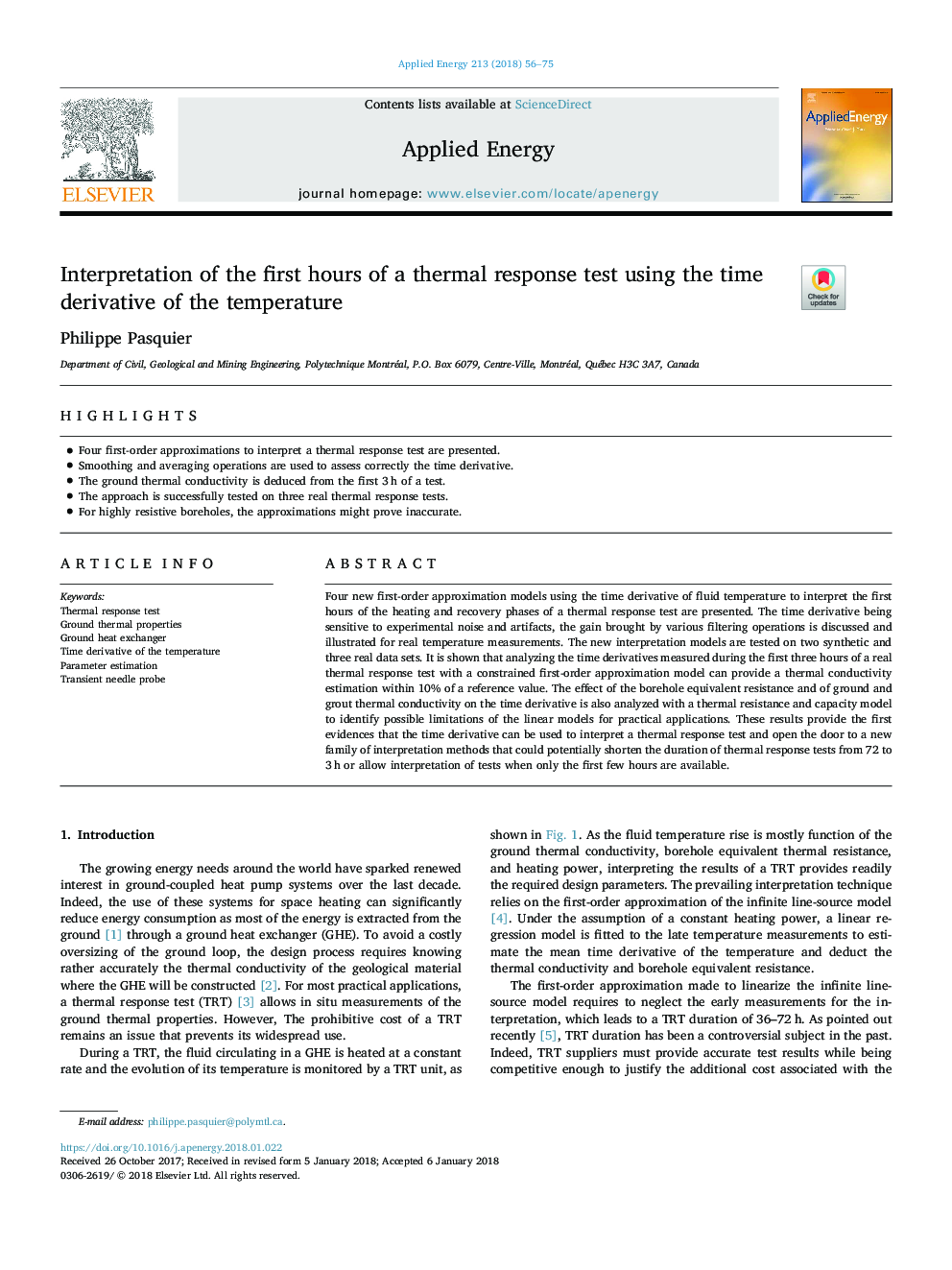| Article ID | Journal | Published Year | Pages | File Type |
|---|---|---|---|---|
| 6680753 | Applied Energy | 2018 | 20 Pages |
Abstract
Four new first-order approximation models using the time derivative of fluid temperature to interpret the first hours of the heating and recovery phases of a thermal response test are presented. The time derivative being sensitive to experimental noise and artifacts, the gain brought by various filtering operations is discussed and illustrated for real temperature measurements. The new interpretation models are tested on two synthetic and three real data sets. It is shown that analyzing the time derivatives measured during the first three hours of a real thermal response test with a constrained first-order approximation model can provide a thermal conductivity estimation within 10% of a reference value. The effect of the borehole equivalent resistance and of ground and grout thermal conductivity on the time derivative is also analyzed with a thermal resistance and capacity model to identify possible limitations of the linear models for practical applications. These results provide the first evidences that the time derivative can be used to interpret a thermal response test and open the door to a new family of interpretation methods that could potentially shorten the duration of thermal response tests from 72 to 3â¯h or allow interpretation of tests when only the first few hours are available.
Related Topics
Physical Sciences and Engineering
Energy
Energy Engineering and Power Technology
Authors
Philippe Pasquier,
